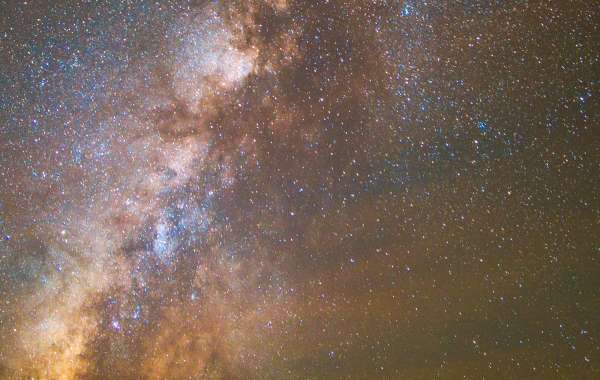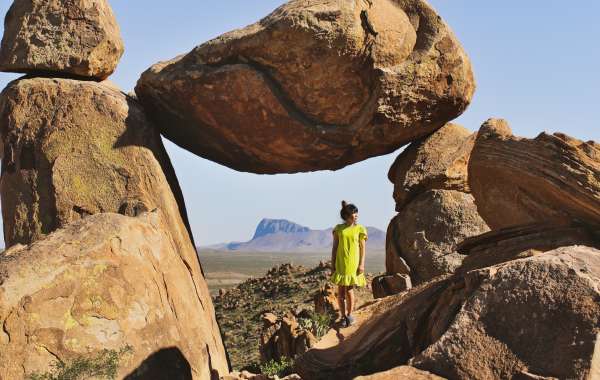In West Texas, it isn’t difficult to get beyond the reach of city lights and under some seriously dark skies. In fact, this part of the state has some of the darkest nighttime skies in the entire country. From observatories and International Dark Sky Parks to quiet roads and backcountry trails, here’s where to catch nature’s premier light show.
McDonald Observatory, Fort Davis
Technically part of UT–Austin—but located far from the capital, sitting atop Mount Locke and Mount Fowlkes in the Davis Mountains—the McDonald Observatory is as world-class as its surroundings. It’s one of the country’s top institutions for astronomical research, public education and community outreach, and its telescopes are quite lucky: They get to peer into some of the darkest night skies in the Lower 48.
The largest of the observatory’s many telescopes—the Hobby-Eberly Telescope—has a 10x11-meter (33x36-foot) mirror, making it fit for exploring distant galaxies and even dark energy. Take a guided tour by day, or attend one of their evening star parties (advance reservations required) for a memorable night cozied up under a blanket in the outdoor amphitheater, gazing through the park’s telescopes and taking in arguably the best show in the state.
The Local Chapter Yurts, Terlingua
Adjacent to Big Bend National Park, The Local Chapter has four luxury yurts spread out atop Maverick Mountain, high above the town of Terlingua. Each has unobstructed, 360-degree views of the Chisos Mountain Range, the Rio Grande and—come nightfall—billions of stars. Welcome to International Dark Sky Park territory.
Each yurt is a far cry from your grandfather’s style of camping: Expect heating and air conditioning, an indoor fireplace, king bed with Italian linens, oversized shower, mini-fridge, outdoor fire ring and your own personal stargazing telescope. (You’ll only need the telescope for locating planets and surveying patterns on the surface of the moon, certainly not for spotting the stars themselves!)
The yurts are designed with couples in mind (max occupancy is two), and The Local Chapter will set you up with itinerary ideas and dining details as you like. Spend your days hiking, horseback riding, scouting out ghost towns or window-shopping at nearby art galleries. But come nightfall, be sure to get yourself back by the fire, under the luminous canopy of stars, for an experience you’ll never forget.
Grapevine Hills, Big Bend National Park
This adventure shines by day, yes, but by night, it’s even brighter. Here’s what to do: From Big Bend’s Panther Junction Visitor Center, drive west for 3.3 miles and then take a right onto the “improved dirt” Grapevine Hills Road. (It’s usually accessible to all vehicles, but ask at the visitor center if there’s been recent rain.) After 6.4 miles, you’ll come upon the Grapevine Hills trailhead. From here, it’s a short-but-sweet 1.1-mile hike to Balanced Rock, where you’ll set eyes on a field of ancient volcanic boulders (with one precariously balanced standout).
You could stay here for nightfall, waiting to see why this national park is gold-tier designated by the International Dark Sky Association. Or, hike back to the road and choose one of the five primitive campsites located along it (at 0.3 miles, 3.8 miles, and at the end of the road). Note that primitive here means primitive—the only amenities you’ll have access to are what you bring with you. Not including the stars.
Monahans Sandhills State Park, Monahans
This lesser-visited state park just off of I-20 provides a 3,800-acre sandbox to play in underneath the stars. Arrive at Monahans Sandhills State Park late in the afternoon to get some sand-sliding runs in, watch the dunes change color as the sun sets and find a soft spot—hint: it’s all soft—to lie back and enjoy the nightly show.
If you snag one of the two dozen or so campsites, you’ll wake up to sand dunes that have entirely different patterns than they did the day before. So take some photos! From the sand to the sky, this state park is never the same twice.
Big Bend Ranch State Park, Presidio
Here’s a quick stargazing lesson: The Bortle Dark-Sky Scale measures night-sky visibility from 1 to 9—class 9 is the most urban of city skies, while class 1 is the most remote swath of Earth you can find. What does the scale say about most of the massive Big Bend Ranch State Park? Class 1. Besides jackrabbits and bighorn sheep, the Milky Way is the most common nightly visitor.
A visit to any part of the park will give you night-sky views you could only dream of, but a few specific spots do stand out due to their combination of stellar views and accessibility. Check out River Road, the West Contrabando Trailhead, Big Hill and the Hoodoos (where Fido is welcome!). And remember, if you set up camp at one of the park’s primitive campsites, consider skipping the campfire and definitely keep that cell phone screen turned off. Out here, feast your eyes on starlight alone.















